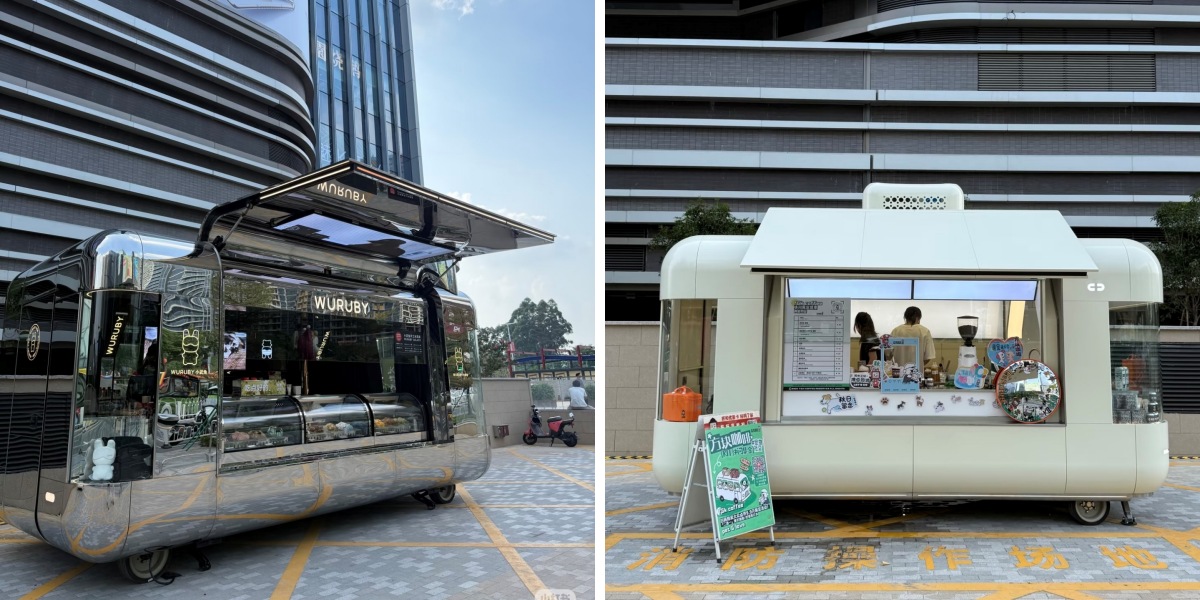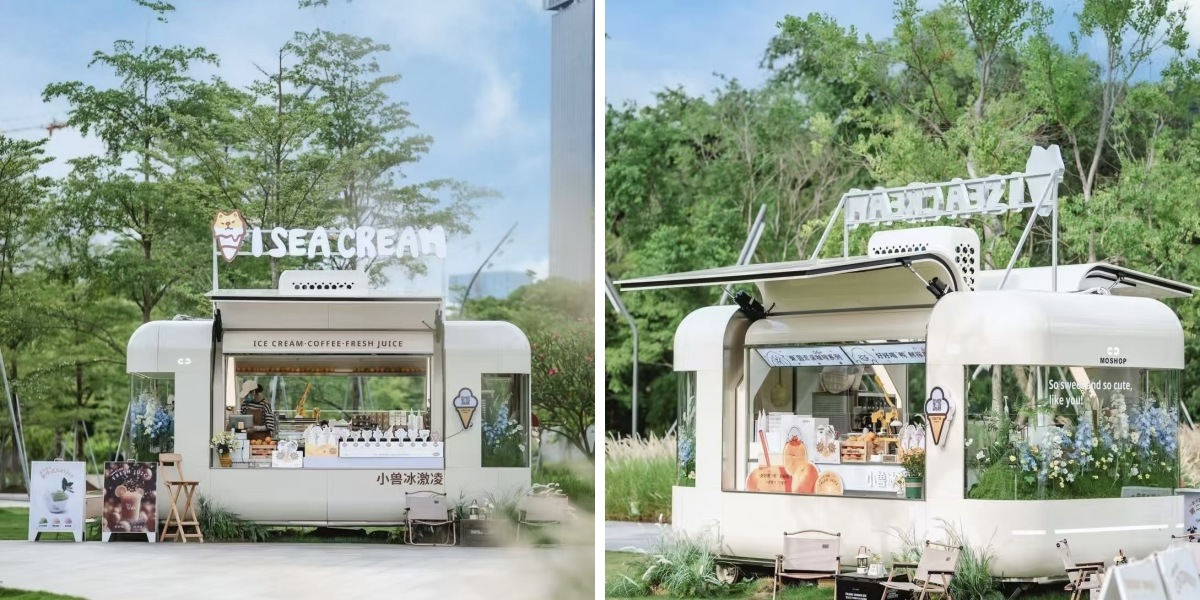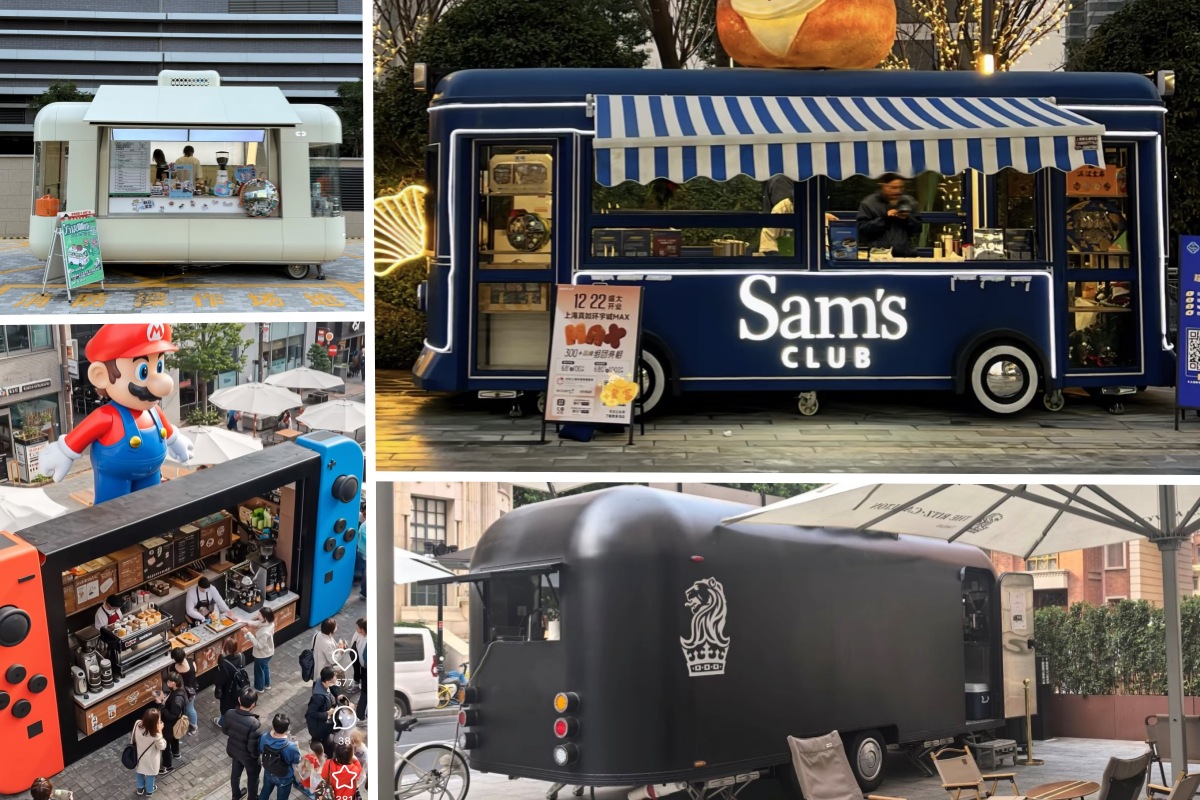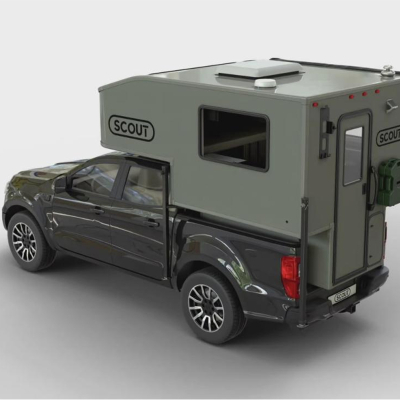The Rise of Mobile Food Trailers: Characteristics and Future Outlook
Imagine this: a stylishly decorated food trailer parks at a bustling street corner, a music festival, or a scenic spot, instantly drawing a crowd. This is the magic of mobile food trailers. As a product of the integration between the food service industry and the mobile economy, they are not just reshaping street food but also reflecting new demands under consumption upgrades. Market data shows China's mobile catering sector grew from 1.2 trillion RMB in 2018 to 2.4 trillion RMB in 2024, while the global market is projected to reach $4.81 billion by 2029. Behind this explosive growth are distinct characteristics and clear development trends.
I. Core Characteristics of Mobile Food Trailers
(1) Operational Model: Flexibility, Low Barrier, and Omni-Scenario Coverage
Mobility is the defining advantage of modern food trailers. Equipped with towing hitches and suitable tires, these units can navigate city streets and country lanes with ease, enabling a dynamic "go where the customers are" strategy. They operate in fixed locations like night markets or near schools, as well as temporary events like festivals and exhibitions. This flexibility significantly lowers the entry barrier for entrepreneurs: there's no need for expensive rent or renovations – a single trailer can launch a business. For instance, a camping-themed concession trailer operated by a Shanghai-based entrepreneur reportedly achieves daily revenues of around 3500 RMB, leading to substantial annual income. Furthermore, services like pre-sales consultation and after-sales maintenance from suppliers help reduce trial-and-error costs for new operators.
(2) Product Presentation: Themed Innovation and Quality Upgrade
Modern food trailers have moved far beyond the stereotype of basic street stalls, competing strongly on both aesthetics and quality. Exterior designs often feature modern, minimalist styles or specific themes – cat motifs, movie elements – turning the trailer itself into a photo-worthy landmark. High-strength steel bodies ensure durability alongside visual appeal. Interiors are scientifically laid out for maximum efficiency, incorporating storage, refrigeration, and integrated fume purification systems to ensure ingredient freshness and a better working environment. Menu-wise, creativity and fusion are key, from Kogi BBQ's Korean-Mexican tacos to Coolhaus's architecturally-inspired ice cream sandwiches. Some trailers even utilize cold-chain logistics to maintain consistent quality, appealing to discerning customers. Partnering with the right manufacturers is crucial for obtaining a unit that supports this level of custom culinary operation.
(3) Marketing Logic: Online Driving Offline Engagement
The "viral" nature hinges on social media prowess. Operators skillfully use platforms to build brand awareness, regularly updating followers on menus, specials, and locations, creating a "chase the truck" phenomenon – a tactic pioneered by Kogi BBQ using Twitter back in 2008. Customer sharing amplifies this effect; the popularity of the Shanghai camping trailer was largely driven by young patrons posting on social media, with over 60% of customers discovering it through friends. This "online-offline consumption-secondary sharing" loop allows trailers to rapidly transcend geographical limits. Savvy owners often source their visually striking concession trailers from specialized dealers who understand the importance of brand image.
II. Development Trends for Mobile Food Trailers
(1) Technology Empowerment: Boosting Operational Efficiency
IoT and big data are increasingly integrated into the food trailer industry. Future trailers will commonly feature smart ordering systems and seamless mobile payment options, enabling scan-to-order and self-service pickups. Remote monitoring and intelligent temperature control will optimize management. Energy innovation is also key; Toyota's hydrogen fuel cell concession trailer, for instance, offers zero-emission operation, with induction cooktops eliminating traditional grease and pollution issues. Such eco-friendly models are set to become market favorites. By 2030, intelligent food trailers could capture a significant market share. Suppliers of these advanced systems are becoming vital partners for forward-thinking operators.
(2) Brand Evolution: From Solo Ventures to Scalable Chains
The single-owner "mom-and-pop" model is gradually giving way to branded, scalable operations. Standardized processes and robust supply chains help food trailers overcome growth limitations. New York's The Halal Guys expanded from one cart to over 300 global locations, earning revenues exceeding $200 million annually. Xi'an Famous Foods started with a trailer and now operates 14 brick-and-mortar restaurants. This transition reduces procurement costs and builds consumer trust through consistent branding. Looking ahead, leading brands will collaborate with delivery platforms, using data analytics to optimize location planning and menu design, creating a hybrid "mobile storefront + online service" model. Finding a dealer or manufacturer that can provide a customized trailer tailored to a specific brand identity is a critical step in this scaling process.
(3) Value Extension: Health Focus and Deeper Scenario Integration
Health-conscious offerings are becoming a central innovation area. Responding to consumer demand, trailers are transitioning from traditional fast food to options featuring low-fat, low-sugar, and high-protein profiles. Seasonal menus and bespoke services, like corporate catering or birthday packages, are also emerging. Scenario integration further expands revenue streams: mobile coffee trailers serve office districts in the morning, cocktail trailers become staples at weddings and parties, and partnerships with camping sites or markets turn them into integral components of a broader experience, not just food vendors. Working with manufacturers to create a highly customized layout is often necessary to efficiently execute these specialized menus in a compact space.
(4) Market Expansion: From Tier-1 Cities to Widespread Presence
Driven by urbanization, mobile catering is expanding from Tier-1 and Tier-2 cities into Tier-3 and Tier-4 markets. While Tier-1 cities currently hold a dominant share, their portion is expected to decrease by 2030 as growth accelerates in Tier-2 cities and emerging western regions. This expansion isn't mere replication; it involves localization – introducing a sour-spicy noodle themed food trailer in southwestern China or creating a culture + food concept in tourist cities, forming a "nationwide yet locally-adapted" market structure. This creates opportunities for dealers and suppliers across the country to provide locally-suited equipment and custom solutions.
From street stalls to an industry powerhouse, the evolution of mobile food trailers is just beginning. As technological innovation, branding, and consumer demand converge, this agile and creative format is set to become a vibrant part of the urban commercial landscape, potentially building a new, multi-billion dollar ecosystem. Like the glowing lights of these trailers illuminating the night, they highlight not just city streets but also the future possibilities of the food service industry. For aspiring entrepreneurs, connecting with reputable concession trailer manufacturers and dealers is the first step toward joining this dynamic movement. Whether seeking a standard model or a fully customized kitchen on wheels, the right supplier can make all the difference.










